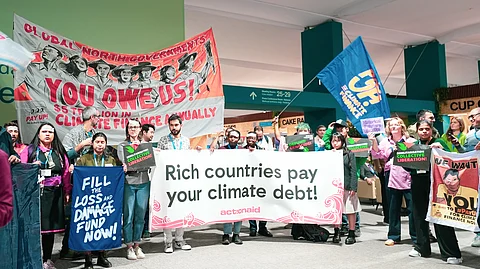

The adaptation needs of developing countries were at stake at the 29th Conference of Parties (COP29) to the United Nations Framework Convention on Climate Change (UNFCCC) in Baku, Azerbaijan, as Parties negotiated the New Collective Quantified Goal (NCQG) for finance. This text was intended to include a separate sub-goal for adaptation, but it did not make it to the final one. Many Parties, particularly the African Group of Negotiators, representing 54 African countries, had strongly advocated for the inclusion of this sub-goal under the NCQG.
Now, developing countries may have to settle for an unspecified fraction of the paltry sum of $300 billion per year pushed through by the COP29 Presidency and several developed Parties, including the European Union. This meagre allocation is intended to support countries in developing their National Adaptation Plans and Adaptation Communications to the UNFCCC, as well as in implementing the Global Goal on Adaptation (GGA).
At COP28 in Dubai, United Arab Emirates (UAE), in December 2023, after years of negotiations and various workshops, the UAE Framework for Global Climate Resilience (FGCR) was established as the GGA. However, the fraction of the US$300 billion that will go towards adaptation is insufficient to make a meaningful impact for any country.
GGA without money means nothing for countries like mine. We published our NAP last year and we need $35 billions for adaptation in my country alone and we are just talking about some billions or maybe a trillion here. We are playing with people’s lives
Representative from Marshall Islands at the ‘Qurultay’ plenary event on November 21, 2024
The needs of the Marshall Islands are a mere drop in the ocean compared to the adaptation requirements of all developing countries. Under the FGCR, current work focuses on developing indicators to measure the thematic and dimensional targets of the framework.
The UAE-FGCR includes seven thematic targets and four dimensional targets. The thematic targets are water; food and agriculture; cities, settlements and key infrastructure; health; poverty and livelihoods; terrestrial and freshwater ecosystems; and cultural heritage.
The dimensional targets encompass risk assessment, planning, implementation and monitoring and evaluation, all of which will require substantial financial resources for developing countries. The UAE-Belem Work Programme is expected to conclude at COP30 in Belem, Brazil, in 2025.
“Nations must dramatically increase climate adaptation efforts, starting with a commitment to act on finance at COP29,” said the United Nations Environment Programme’s (UNEP) Adaptation Gap Report 2024: Come hell and high water released November 7, 2024.
2022 recorded the greatest year-on-year absolute and relative increase in adaptation finance flows to developing countries, rising from $22 billion in 2021 to $28 billion in 2022, the report highlighted. However, the actual adaptation financing needs for developing countries amount to a staggering $387 billion per year until 2030.
This reflects some progress towards achieving the Glasgow Climate Pact goal of doubling annual adaptation finance from developed to developing countries, from 2019 levels of $19 billion to $38 billion in 2025. Yet, this is far from sufficient to meet the actual requirements and the new contributions to adaptation finance announced at COP29 show little promise.
The Adaptation Fund could cough up only “around one-sixth” of its targeted commitments from the COP29, Down To Earth (DTE) had earlier reported. The Fund received only $61 million against its annual target of $300 million.
“The actual need for adaptation is in the range of $200-$400 billion and we so far, could only receive 10 per cent of the target,” Mikko Ollikainen, head of the Adaptation Fund, told DTE. The Glasgow Climate Pact target was likely to be missed too, Ollikainen had pointed out.